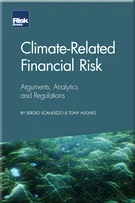The Carry Trade: The Essentials of Theory, Strategy and Risk Management
Michael R Rosenberg
A Case for Currency in Institutional Portfolios
The Currency Conundrum: Regret Versus Optimal Hedging
Global Asset Allocation and Optimal US Dollar Hedging
Alternative Currency Hedging Strategies with Known Covariances
Strategic Asset Allocation and Currency Betas
Separating Currency Returns from Asset Returns in Theory and Practice: Conscious Currency and Beyond
Economic Data Surprises and Currency Alpha
Is Trend Following in Foreign Exchange Markets Going Out of Fashion?
The Carry Trade: The Essentials of Theory, Strategy and Risk Management
Carry Trades in Emerging Markets
Investing in Emerging Market Currencies: A Rewarded Risk
The Currency Investing Process: Managing G10 Currencies
Systematic Currency Trading
A Discretionary Approach to Currency Investing
Due Diligence as a Source of Alpha
Currency Forecasting: Generating Views about Foreign Exchange
Exchange Rates, Risk Premia and Inflation-indexed Bond Yields
Currency Investing: A Risk Premium Approach
Currency Management Styles: Ten Years On
The Future of Currency Investing in Institutional Portfolios
This chapter surveys the major theoretical issues and empirical evidence on the performance of FX carry trades. The chapter also discusses the strategic issues around the construction of a carry-trade portfolio, and what risk management tools and trading systems are available to manage the downside (tail) risks associated with FX carry trades.
The first section of the chapter discusses how a typical carry-trade cycle evolves over time – from an initial widening in interest rate spreads to a gradual build-up in net speculative positions in favour of high-yield currencies, and finally to the eventual forced unwinding of those positions when liquidity conditions tighten and risk appetite declines.
The second section examines the theoretical foundations of the carry trade. According to theory, the excess returns on FX carry trades should be zero if the uncovered interest rate parity (UIP) condition held. According to the UIP condition, high-yield currencies might offer an initial yield advantage over their low-yielding counterparts, but over time that yield advantage will tend to be offset by an expected depreciation of the high-yield currencies versus the low-yield currencies. The
Copyright Infopro Digital Limited. All rights reserved.
As outlined in our terms and conditions, https://www.infopro-digital.com/terms-and-conditions/subscriptions/ (point 2.4), printing is limited to a single copy.
If you would like to purchase additional rights please email info@risk.net
Copyright Infopro Digital Limited. All rights reserved.
You may share this content using our article tools. As outlined in our terms and conditions, https://www.infopro-digital.com/terms-and-conditions/subscriptions/ (clause 2.4), an Authorised User may only make one copy of the materials for their own personal use. You must also comply with the restrictions in clause 2.5.
If you would like to purchase additional rights please email info@risk.net










